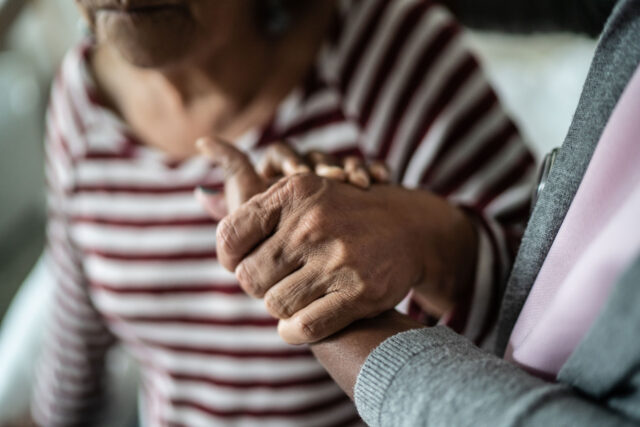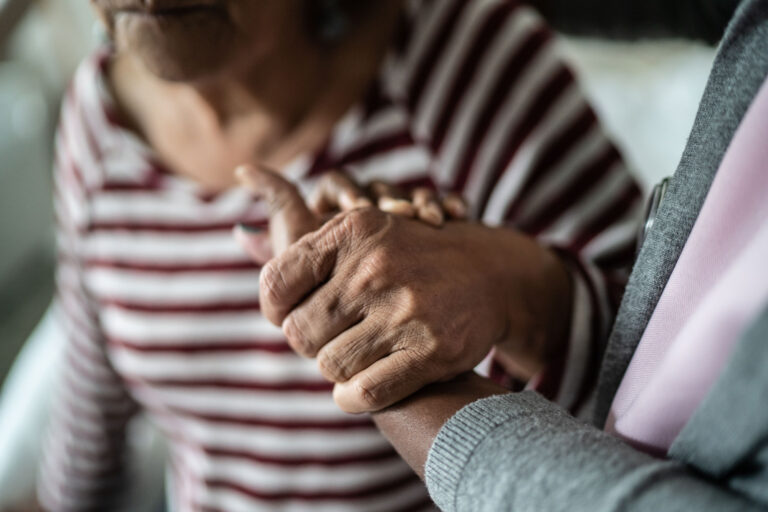California has been investing in its immigrant population by expanding Medi-Cal eligibility to low-income undocumented residents by age group. In January 2024, the program becomes available to all ages, regardless of immigration status, and the state can expect an influx of new Medi-Cal applicants. Information on the health of undocumented immigrants and the health services they use can help California plan for the health care needs and costs that this last expansion may bring.
What can visits to community health centers tell us about undocumented patients?
We can gain insights into health care needs by comparing clinic visits among low-income undocumented immigrants who would qualify for Medi-Cal but for their immigration status, to Medi-Cal patients in the same clinics. We studied 369,891 individuals who made over 5.4 million visits to 350 community health centers (CHCs) between January 2018 and November 2022. We use electronic health records to study several outcomes, including the types of visits patients make for health care; additional information helps us identify whether patients are undocumented.
CHC records list chronic diseases for patients—such as heart disease, diabetes, and obesity. Statewide, undocumented patients and Medi-Cal patients have similar rates of chronic disease—and undocumented young adults are healthier than their Medi-Cal peers. Chronic diseases are more common among middle-age and older adults.
Which health care services are undocumented patients likely to get?
While most clinic visits are coded for preventive health services (statewide 55.9%, LA County 66.8%), visits by undocumented patients are 20 percent less likely than Medi-Cal patients’ visits to be coded for preventive reasons such as an annual checkup. A range of issues may drive this difference, from immigration-related fears to lack of insurance.
However, undocumented patients are about as likely to get many age-appropriate cancer screenings and vaccinations—important components of preventive care. Statewide, undocumented patients and Medi-Cal patients have similar rates on file for having completed mammograms and colonoscopies. In LA County, though, PAP tests and lab tests for colon cancer are more likely among undocumented patients. Both groups get shots for shingles, flu, and COVID-19 at similar rates across the state, while LA’s undocumented immigrants exceed their Medi-Cal peers.
Are undocumented immigrants using behavioral health and telehealth?
Many undocumented immigrants are managing trauma, including trauma related to migration, domestic violence, or experiencing war in their home countries, according to interviews with experts in LA. These interviewees highlight a strong demand for behavioral health even as patients face long wait times for appointments, and as clinics struggle to find fully bilingual providers who can offer counseling in Spanish
or other languages.
Among undocumented patients, visits are much more likely (36%) to be for behavioral health than among Medi-Cal patients around California, especially among those 26 to 49 and older. In LA County, the increased likelihood is even greater (46%), with an even larger difference (70% more likely) among young adults.
Telehealth can alleviate logistical problems for low-income patients, such as scheduling around jobs and arranging transportation. Statewide and in LA County, around a quarter of visits were telehealth visits, which is striking since it was negligible before the pandemic. In LA, telehealth visits are more likely among undocumented patients than Medi-Cal patients, even among adults 50+.
The likelihood of a visit for behavioral health is high among undocumented patients in LA County

SOURCE: ADVANCE network data for low-income patients ages 19 and older who are likely to be undocumented or who are enrolled in Medi-Cal and get care in OCHIN’s LA County community health centers.
NOTES: Bars represent regression-adjusted associations between a visit being coded for behavioral health care and patient undocumented status, scaled by mean outcome. Controls include age on day of visit, sex, race/ethnicity, preferred language, and fixed effects for clinic and calendar year. Standard errors are clustered by clinic. Effects considered significant if they differ from 0 at the 95-percent level of confidence or greater. *p<0.05
How will the final Medi-Cal expansion affect enrollment and services?
Recent adult Medi-Cal expansions—one to young adults up to 26, the other to older adults over 50—present contrasting examples of how newly eligible undocumented immigrants respond. Medi-Cal was not a more prominent payer with young adults who visited clinics after the expansion, but it was with older adults. Patients may follow a similar pattern for the final Medi-Cal expansion, which targets ages 26 to 49—younger adults may show less interest in applying than older adults.
County welfare departments, CHCs, and immigrant-serving organizations can expect more Medi-Cal applicants, and CHCs should expect more clinic visits, which will likely include high demand for behavioral health services. To prepare for these increases:
- Clinics would benefit from resources to hire more staff, especially bi- or multilingual staff. While 57 percent of undocumented study members statewide prefer to communicate in Spanish, less than half of telehealth users (43%) have a Spanish preference.
- Expanding telehealth use may ease some barriers to care; tutorials or hands-on assistance from trusted nonprofits can help get patients comfortable with telehealth technology.
Topics
COVID-19 Health & Safety Net Immigrants in CaliforniaLearn More

California’s Medi-Cal Expansion Is Lowering Poverty among Undocumented Immigrants

The Affordable Care Act Has Expanded Community Clinics in California

In First-in-Nation State Law, All Low-Income Residents Qualify for Medi-Cal

Video: Health Conditions and Health Care among California’s Undocumented Immigrants

Telehealth Usage among Low-income and Undocumented Californians

Low-income and Undocumented Californians Struggle with Mental Health


